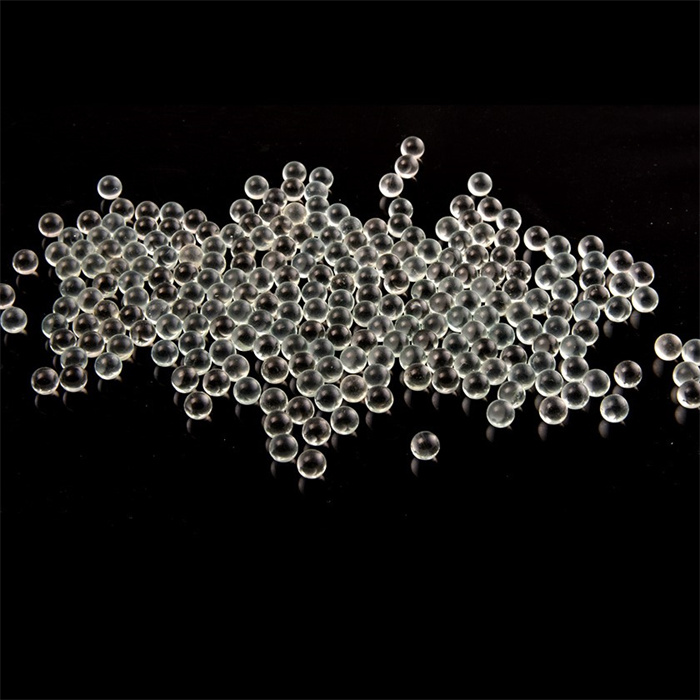
Overview:
Glass beads play a vital yet often unseen role in countless industries by enhancing products through retroreflection. However, traditional manufacturing carries an environmental cost. This guide explores a better solution – industrial glass beads produced through innovative melting processes reducing carbon footprint and emissions, while still delivering unbeatable performance.
What are Glass Beads?
Glass beads, also called glassmicrospheres, are nearly spherical solid glass particles typically below 1mm in diameter. They are engineered for high retroreflection through internal total reflection within the glass-air interface. Main uses include:
- Road markings for visibility & safety
- Signage like highway signs for directing traffic
- Personal protective equipment for high-vis clothing
- Construction materialsaddition for strength
However, conventional production comes with drawbacks. Let’s explore a greener alternative.
Understanding the Eco- Friendly Process
Most industrial glass beads are manufactured via “air furnace” melting which uses non-renewable fuels generating carbon emissions. A better option is the downstream process developed by Lanxing which deploys fluidized bed melting.
Key differences:
- Melting in fluidized bed of recycled cullet at lower 800-850°C vs air furnace’s higher 1200-1500°C
- Using natural gas, a low-carbon fuel, instead of coal or oil
- Eliminating dirty emissions through advanced filtration system
By harnessing efficient, clean technology, Lanxing produces beads with an average 30% lower carbon footprint. Their high quality ensures products still excel in retroreflection.
Specifications of Lanxing Glass Beads
The performance attributes of Lanxing glass beads meet rigorous commercial and road/work zone safety standards worldwide:
Grade 30:
- Size: US No. 10 (425-600μm)
- Roundness: 95% min
- Index: 1.50±0.05
- Softening point: 545°C min
Grade 50:
- Size: US No. 20 (300-500μm)
- Sphericity: 98% min
- Index: 1.52±0.03
- Softening point: 550°C min
Meeting standards, their whiteness and spherical shape maximize retroreflectivity for applications. The lower carbon manufacturing process is the eco-friendly bonus.
Multifaceted Applications of Glass Beads
Beyond road markings, glass beads enhance many products through added retroreflectivity and strength. Some key uses:
- Signage: Long-term durable signs for highways, airports etc.
- PPE: Added to high-visibility vests, jackets and uniforms
- Construction: Reinforcing plasters, concrete, asphalt for durability
- Paints: Imparting retroreflection to traffic and pavement paints
- Cable and wire identification: Easy locating of buried lines
- Thermoplastics: Integral to long-life hot-applied road markings
By selecting environmentally-considerate beads, multiple industries can benefit from performance gains while reducing their carbon footprint.
The Pros and Cons of Industrial Glass Beads
Here’s a breakdown of their key advantages and limitations:
| Pros | Cons |
|---|---|
| Excellent retroreflective properties enhance visibility, safety and guidance under various lighting conditions. | Prone to breakage during transportation if packaging isn’t sufficiently protective. |
| Withstand weathering, abrasion and other environmental stresses, retaining reflective qualities for a long service life. | Inhalation hazard – airborne glass bead dust particles can be dangerous if proper protective measures aren’t followed during manufacturing and application. |
| Impart additional strength and reinforcement when incorporated into mixtures like plasters, paints, concrete and asphalt due to their density and spherical shape. | Higher material cost compared to regular fillers without retroreflective qualities. |
| Easy to combine with and disperse evenly throughout a variety of polymer mixtures, primers and resins using conventional industrial mixing equipment. | Require environmentally conscious, emissions-reducing production processes like Lanxing’s fluidized bed melting to minimize carbon footprint. |
| Facilitate the enhancement of a wide range of industrial and consumer products with valuable retroreflective properties through a single additive. | Special packaging and bulk storage may be needed to prevent separation of glass beads by size/density and protect against breakage. |
Overall, glass beads’ valuable reflective qualities outweigh these minor tradeoffs – especially when produced through Lanxing’s environmentally-conscientious process.
Why Choose LANXING?
Lanxing Impex is a global pioneer leading the way towards greener glass bead manufacturing. Our fluidized bed melting uses clean natural gas to minimize carbon footprint by an average 30% versus industry standard production.
Lanxing’s industrial glass beads meet or exceed all commercial and safety specifications. Their spherical shape, tight gradation and refractive index maximize light return for superior retroreflection performance.
As an ISO 9001 certified, ECO-friendly supplier, you can trust Lanxing’s quality control and commitment to sustainability. We work closely with customers to fulfill diverse application needs, from road safety to construction to signage.
When you need high-quality industrial glass beads that enhance products through visibility while reducing environmental impact, choose Lanxing Impex. Contact us to learn more.
Common Questions about Industrial Glass Beads
Q1: How do glass beads enhance retroreflection?
A: Their nearly spherical shape and smooth surfaces promote internal total reflection of light back to its source through the glass-air interface.
Q2: What makes some glass beads more environmentally friendly than others?
A: Production process efficiency and fuel source – lower temperature melting using cleaner energy like natural gas emits less carbon.
Q3: What properties determine a glass bead’s grade?
A: Main factors are size, roundness/sphericity, refractive index which affects retroreflection, and softening/melting point.
Q4: How can I incorporate glass beads into products safely?
A: Always use in fixed mixtures, encasements or coatings to prevent inhalation. Wear protective gear during handling and incorporate ergonomic work practices.
Q5: What packaging options are available for industrial glass beads?
A: Lanxing provides flexible options – multi-layer bags, bulk boxes or bulk tanker truckloads per customer needs and order sizes.
In summary, the profound benefits of glass beads’ light-returning abilities outweigh the minor limitations, particularly when choosing eco-friendly varieties manufactured through advanced clean technologies.





